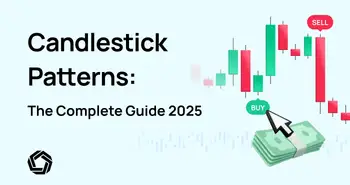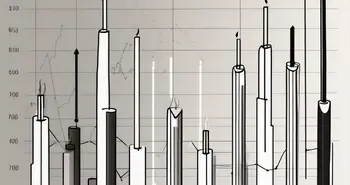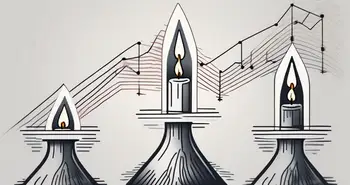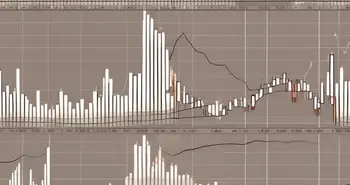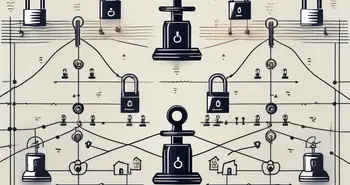Understanding the Piercing Pattern: A Comprehensive Guide
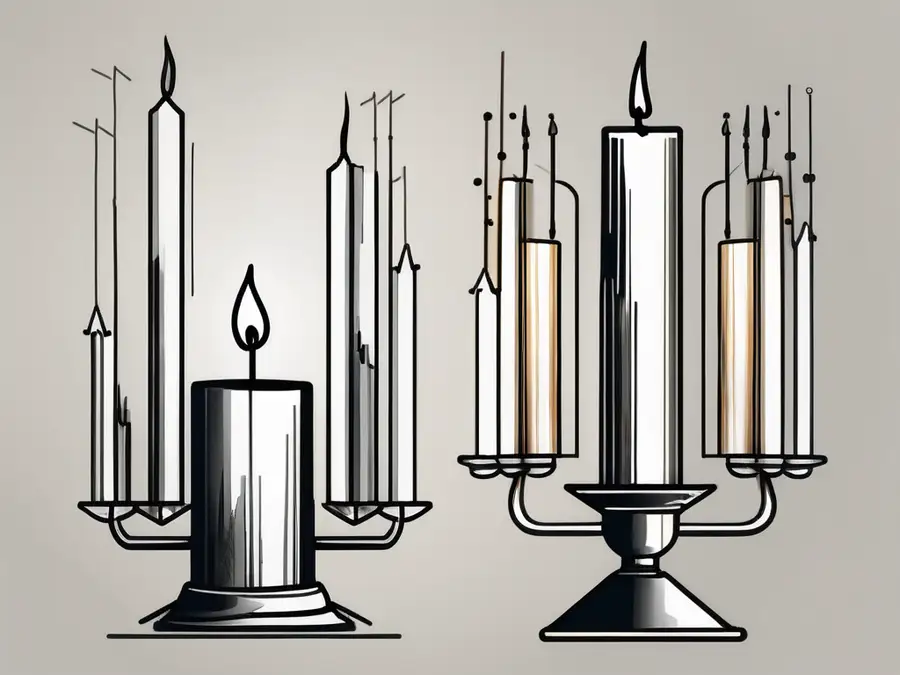
Here's what you need to know about the piercing pattern, a powerful candlestick pattern that can provide valuable insights into market trends and potential reversals. As an expert in technical analysis, I will guide you through the various aspects of this pattern, from its definition to its trading strategies. So, let's dive in and unlock the secrets of the piercing pattern!
Introduction to Piercing Pattern
The piercing pattern is a bullish reversal pattern that consists of two candlesticks. It often occurs at the end of a downtrend, indicating a potential trend reversal. Understanding the basic concepts behind this pattern is crucial to effectively interpret its signals and make informed trading decisions.
When analyzing candlestick patterns, traders often look for specific formations that can provide insights into market dynamics. The piercing pattern is one such formation that can offer valuable information about potential shifts in market sentiment.
Definition and Basic Understanding
The piercing pattern is formed when the first candlestick is a long bearish candle, followed by a long bullish candle that opens below the previous candle's low and closes above its midpoint. This indicates a shift in market sentiment from bearish to bullish and suggests that buyers are gaining control.
Let's dive deeper into the components of the piercing pattern. The first candlestick represents a period of strong selling pressure, where bears dominate the market. However, the second candlestick shows a significant shift in momentum, with buyers stepping in and pushing the price higher.
It's important to note that the second candlestick's close should be above the midpoint of the first candlestick's body. This confirms the strength of the bullish reversal and increases the pattern's reliability.
Importance in Technical Analysis
The piercing pattern holds significance in technical analysis as it can provide early indications of a trend reversal. When identified correctly, it can offer traders an opportunity to enter the market at advantageous prices and maximize potential profits.
Traders often use the piercing pattern in conjunction with other technical indicators and analysis tools to confirm its validity. This pattern's reliability increases when it appears after a prolonged downtrend, as it suggests a potential exhaustion of selling pressure and a possible shift in market dynamics.
Moreover, the piercing pattern's bullish reversal signal can be strengthened when it occurs near key support levels or trendlines. These levels act as additional confirmation of a potential trend reversal, increasing the pattern's reliability and the trader's confidence in their trading decisions.
It's worth mentioning that no pattern or indicator guarantees a successful trade. Traders should always consider other factors such as market conditions, volume, and overall trend before making any trading decisions based on the piercing pattern.
In conclusion, the piercing pattern is a powerful tool in technical analysis that can provide valuable insights into potential trend reversals. By understanding its definition, components, and importance, traders can effectively incorporate this pattern into their trading strategies and increase their chances of making profitable trades.
Components of the Piercing Pattern
Breaking down the piercing pattern into its individual components helps us better understand its formation and significance in trading.
The piercing pattern is a two-candlestick pattern that can indicate a potential reversal in a downtrend. It is formed when a long bearish candle is followed by a long bullish candle that opens below the previous candle's low and closes above the midpoint of the first candlestick.
First Candlestick in the Pattern
The first candlestick in the piercing pattern is a long bearish candle. It represents the existing downtrend, indicating that sellers have dominated the market. This candlestick shows a strong selling pressure and a lack of buying interest.
Traders often look for a significant price decline in the first candlestick, as it suggests a strong bearish sentiment in the market. The length of the bearish candlestick can vary, but a longer candlestick indicates a more pronounced downtrend.
Second Candlestick in the Pattern
The second candlestick in the piercing pattern is a long bullish candle that opens below the previous candle's low. As buyers step in, the price rises, closing above the midpoint of the first candlestick. This suggests a potential reversal in the trend, with buyers gaining momentum.
When analyzing the second candlestick, traders pay attention to its opening price. The fact that it opens below the previous candle's low indicates that there is still selling pressure in the market. However, as the price rises and closes above the midpoint of the first candlestick, it shows that buyers are stepping in and pushing the price higher.
The length of the bullish candlestick is also important. A longer candlestick indicates a more significant buying pressure and a stronger potential for a trend reversal.
It is worth noting that the piercing pattern is considered more reliable when it occurs after a prolonged downtrend and is accompanied by other technical indicators or chart patterns that confirm the potential reversal.
Traders often use the piercing pattern as a signal to enter a long position or to close their short positions. However, it is important to wait for confirmation from other indicators or patterns before making trading decisions.
Identifying a Piercing Pattern
Recognizing a piercing pattern requires a keen eye for specific characteristics that confirm its presence amidst the noise of the market.
Key Characteristics to Look For
When identifying a piercing pattern, pay attention to the following:
- The presence of a downtrend before the pattern formation
- A long bearish candle as the first candlestick
- A long bullish candle opening below the previous candle's low and closing above its midpoint
Common Mistakes in Identification
Novice traders often make some common mistakes while identifying the piercing pattern:
- Misinterpreting a minor pullback as a piercing pattern
- Failing to consider the overall trend and context
- Ignoring the volume analysis
The Psychology Behind the Piercing Pattern
To truly grasp the significance of the piercing pattern, it's essential to understand the psychological dynamics at play.
Investor Sentiment and Market Dynamics
The piercing pattern reflects a shift in investor sentiment, with buyers regaining confidence and challenging the prevailing bearish sentiment. It indicates a potential change in supply-demand dynamics and suggests a possible trend reversal.
Fear and Greed in the Piercing Pattern
The piercing pattern can often evoke feelings of fear among sellers who realize that the downtrend might be ending. At the same time, it fuels the greed of buyers who see an opportunity to enter the market at favorable prices. This interplay of fear and greed drives the pattern's formation and significance.
Trading Strategies Involving Piercing Pattern
Now that we understand the piercing pattern and its underlying psychology, let's explore some effective trading strategies to capitalize on this pattern.
Entry and Exit Points
When considering entry and exit points, it's crucial to wait for confirmation before entering a trade. A common strategy involves waiting for a bullish confirmation candle to ensure the piercing pattern is valid. Traders often use stop orders to limit losses and take profits once the price reaches a predetermined target.
Risk Management and Stop Loss
Implementing risk management strategies is equally important as identifying trading opportunities. Setting appropriate stop-loss orders helps limit potential losses in case the pattern fails to result in a trend reversal. Traders should also consider adjusting their position size according to their risk tolerance and overall portfolio management.
As an expert in technical analysis, I have successfully incorporated the piercing pattern into my trading strategies. One piece of advice I have for aspiring traders is to combine the piercing pattern with other technical indicators to enhance the reliability of their signals. Remember, no single pattern or indicator guarantees success, but a comprehensive approach can significantly improve your trading outcomes.
FAQ
What is a piercing pattern?
The piercing pattern is a bullish reversal pattern consisting of two candlesticks. It occurs at the end of a downtrend and suggests a potential trend reversal.
How do I identify a piercing pattern?
To identify a piercing pattern, look for a long bearish candle followed by a long bullish candle that opens below the previous candle's low and closes above its midpoint.
What strategies can I use with the piercing pattern?
Two common strategies to consider are waiting for a bullish confirmation candle for entry and setting appropriate stop-loss orders for risk management.
What mistakes should I avoid when identifying piercing patterns?
Common mistakes include misinterpreting minor pullbacks as piercing patterns, failing to consider the overall trend, and ignoring volume analysis.
Now armed with a comprehensive understanding of the piercing pattern, you're ready to incorporate this powerful tool into your technical analysis arsenal. Remember to combine it with other indicators and always implement sound risk management practices. Happy trading!
Ready to put your newfound knowledge of the piercing pattern to the test? Join Morpher, the revolutionary trading platform that empowers you to trade with zero fees, infinite liquidity, and the flexibility of fractional investing. Whether you're looking to dive into stocks, cryptocurrencies, or even niche markets like NFTs, Morpher's blockchain-based platform is designed to elevate your trading experience. Sign up now to take advantage of up to 10x leverage, short selling opportunities, and the safety of the Morpher Wallet. Don't miss out on your chance to transform the way you trade. Sign Up and Get Your Free Sign Up Bonus today and start trading the smart way!

Disclaimer: All investments involve risk, and the past performance of a security, industry, sector, market, financial product, trading strategy, or individual’s trading does not guarantee future results or returns. Investors are fully responsible for any investment decisions they make. Such decisions should be based solely on an evaluation of their financial circumstances, investment objectives, risk tolerance, and liquidity needs. This post does not constitute investment advice.

Painless trading for everyone
Hundreds of markets all in one place - Apple, Bitcoin, Gold, Watches, NFTs, Sneakers and so much more.

Painless trading for everyone
Hundreds of markets all in one place - Apple, Bitcoin, Gold, Watches, NFTs, Sneakers and so much more.


